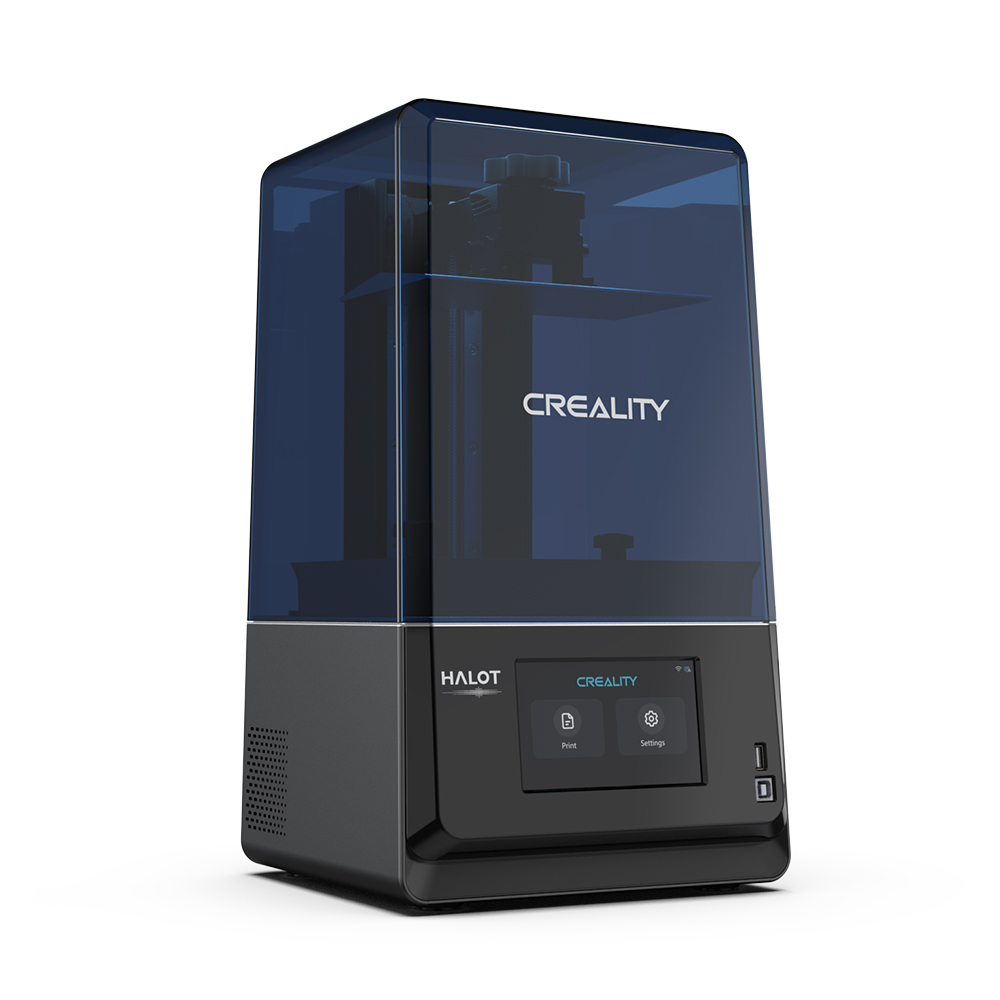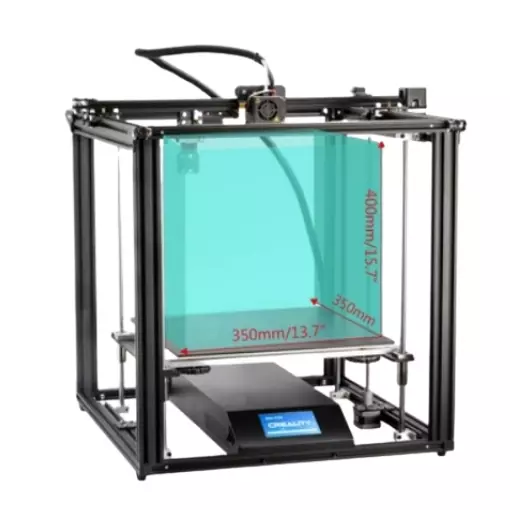Compare Halot One Plus vs Ender 5 Plus
Comparison between the best 3D printers
Choose the best 3D printer at the best price. The cheapest 3D printers are here.
Buy a 3D printer here with 3D Fila.
 |
 |
|
| Model | Halot One Plus[BUY Halot One Plus] |
Ender 5 Plus[BUY Ender 5 Plus] |
| Printing Material | Resin | Filament |
| Buy Resin for Creality 3D Halot One Plus | Buy Filament forCreality 3D Ender 5 Plus | |
| Estimated price | $399,00 | $599,00 |
| Manufacturer | Creality 3D | Creality 3D |
| Release Year | 2022 | 2019 |
| Print Volume [mm] | 102x172x160 | 350x350x400 |
| Printer Size [mm] | 236x245x416 | 632x619x666 |
| Weight [kg] | 6,8 | 18,2 |
| Power Loss Recovery | NO | YES |
| Maximum Resolution [mm] | 0,1 | |
| Processor | 32 bits | |
| Display | Touchscreen TFT 4,3'' | |
| Power Supply | 24V / 504W | |
| Connectivity | USB / Wi-Fi | SD / USB |
| Operating systems | Windows, Mac, Linux | |
| Date of registration in the system | 2022-10-11 | 2021-04-14 |
| Release date | 2022 | 2019 |
| Extra features | Crealitys Halot-One Plus printer stands out for its 4K+ resolution that delivers sharp details and consistent surfaces. It features a fast and responsive 5-inch LCD interface, as well as easy-to-use Halot Box software. It offers Wi-Fi connectivity and remote print monitoring, as well as an integrated air filtration unit, a rare feature in this price range. The Halot-One Plus is designed for the prosumer market, combining high quality with advanced features such as Wi-Fi and air filtration. During testing, it stood out for implementing these features at an affordable cost, while maintaining functionality. It features an attractive design with a UV-resistant blue cover and a robust dual rail system for the Z-axis, ensuring smooth and consistent movements. The large LCD and high resolution of the LCD mask (4320 x 2560) are other strong points, allowing for fine details and textures in prints. | The Ender 5 Plus offers a large print volume (350x350x400 mm) and fast assembly. It includes a BLTouch sensor, but with range limitations. It stands out for its dimensional accuracy, although it requires adjustments to the slicer settings. Despite the noise, its integrated design saves space, and includes features such as a filament sensor and power resumption. Ideal for large projects, it requires refinement in the settings for high-quality prints. |
| Support for multiple colors and materials (AMS and CFS) | NO | NO |
Notes * |
||
| Cost-benefit | 8 / 10 | 6 / 10 |
| Hardware | 1.4 / 10 | 2 / 10 |
| Tela | . | . |
| Print volume | 3 / 10 | 4 / 10 |
| Performance | 9 / 10 | 1 / 10 |
| [BUY Halot One Plus] | [BUY Ender 5 Plus] |
Conclusion |
| In comparing the Creality 3D Halot One Plus and the Ender 5 Plus, several key factors come into play, leading to the conclusion that the choice largely depends on the user's specific needs and budget. The Halot One Plus emerges as a strong contender for those prioritizing resolution and print quality. With its 4K+ resolution, this resin printer excels at providing sharp detail and smooth surfaces, making it particularly well-suited for detailed models. Additionally, its compact size, lightweight design, and features such as power loss recovery and Wi-Fi connectivity offer added convenience and modern functionality. The inclusion of an integrated air filtration unit is a notable advantage in this price range, further enhancing its appeal. On the other hand, the Ender 5 Plus appeals to users requiring a larger print volume for bigger projects. Its robust construction and dimensional accuracy can produce high-quality prints, but it may require more fine-tuning and adjustments. While slightly more expensive, its additional features like the BLTouch sensor and power resumption capabilities justify its cost for those focused on producing larger items. The Halot One Plus provides better cost-benefit value, especially for users interested in high-resolution, detailed printing without the need for large print volumes. However, the Ender 5 Plus may be preferable for those who prioritize space and volume over resolution, particularly for larger designs. Ultimately, the Halot One Plus is the better option for detail-oriented users who value advanced features in a compact form, while the Ender 5 Plus serves those who need versatility and larger build space at a higher price point. Considerations of functionality, print quality, and specific project requirements should guide the final decision. |

